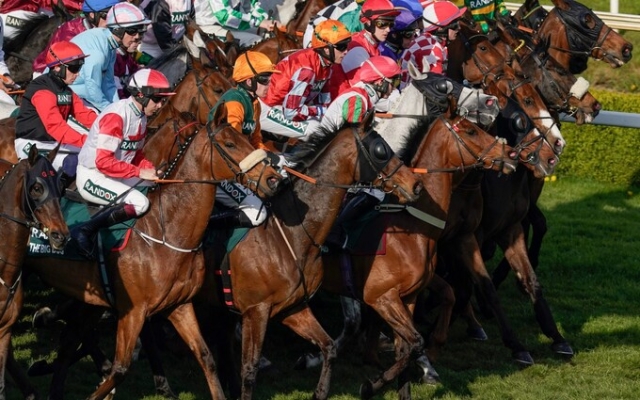 The size of the Grand National pitch will be reduced from 2024. Photo: Getty Images/Alan Crowhurst
The size of the Grand National pitch will be reduced from 2024. Photo: Getty Images/Alan Crowhurst
The Grand National is undergoing a series of sweeping safety changes, including reducing the size of the field and moving the first fence following animal rights protests.
The changes follow an annual review of the race which Aintree is undertaking, but has not carried out, the racecourse insisted on this, largely due to the track invasion by Animal Rising, which delayed the start of this year's Grand National and consequently upset several horses, including one of which was fatal at the first fence, Hill Sixteen.
As a result of the review, next year's Grand National will include:
- The number of horses from 40 will be reduced to a maximum of 34.
- The first fence is to be moved back to 60 yards to the start to reduce the speed of arrival on the field.
- Implementation of a standing start on the tape.
- Start time moves back to noon. to assist ground control.
- Cut the 11th fence two inches to reduce the risk of falls.
- Remove handlers from the parade.
- We are strengthening the work of veterinary and medical services before the race. compliance check
The Jockey Club has announced that it will reduce the maximum number of runners for the first time since 1984, reducing the size of the field from 40 to 34, and in an attempt to reduce the speed of the field towards the first it will remove the first fence . 60 yards closer to the starting line, and also implement a standing start.
The changes come just six months after animal rights protesters attacked Aintree and caused a delay to the 2023 Grand National before Hill Sixteen died at the stadium. first fence when the race finally started after a 15-minute delay.
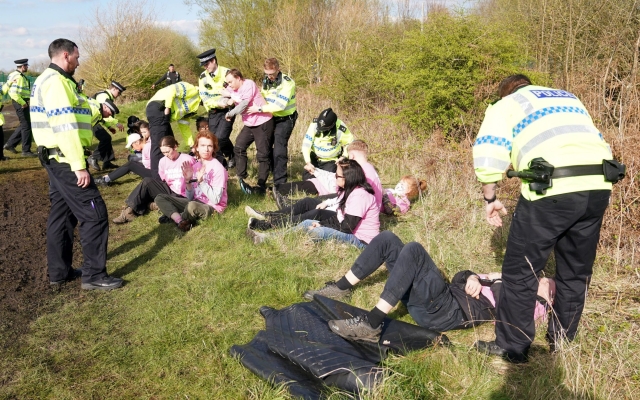 Protesters detained by police before last year's Grand National. Photo: PA/Tim Goode
Protesters detained by police before last year's Grand National. Photo: PA/Tim Goode
Other more subtle changes include moving the race from a start after 5pm to mid-afternoon, which helps ground control with more turf distribution, and a parade without a handler, meaning each horse can canter in front of the stands before turning to look at the first fencing.
Although the earlier start time will be reintroduced in light of upcoming events, it will also reduce the length of time that the 80,000 in attendance will have to drink alcohol and add to the atmosphere that could be argued to have contributed to the chaotic scenes this year. .
Pre-race veterinary controls and selection criteria will also be strengthened and fence 11 will be shortened by two inches, although no horse has died in an open ditch in the history of the National Championship.
This comes 10 years after the last major changes were made to the famous course — replacing the wooden post fences with more forgiving «plastic birch», removing most of the landings and moving the start 90 yards forward after two horses. including Cheltenham Gold Cup winner Synchronized, died during the 2012 race.
One of the things that sets the National apart as a race and the sport's hottest 10 minutes is its full 40-horse field. Horses racing from the grandstands over the first six fences and reducing that number by 15% is the most controversial change.
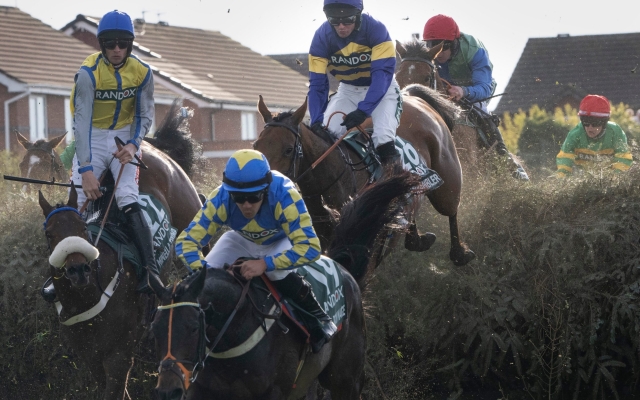 Height 11 The fence will be reduced next year. Photo: David Rose for The Telegraph
Height 11 The fence will be reduced next year. Photo: David Rose for The Telegraph
Speaking about the decision, Aintree course secretary Sulekha Varma, who led the review process, said: “The welfare of our racehorses and jockeys is our number one priority at Aintree and we have invested heavily in equine welfare over many years. We continually review the Grand National and, following an in-depth, evidence-based review process, are announcing several changes this year as part of its continued development.
“One of our key areas is to reduce the risk of incidents during the race. We know from research papers and internal racing analysis that there is a direct correlation between the number of runners and the risk of falling, tripping or falling.
“However, we must also take into account that reducing the size of the field too much could speed up the race and have a negative impact on safety. Using the information available to us and taking into account the experience of the participants, we have concluded that the maximum number of runners in the race should be 34, which we hope will result in the fewest number of incidents.»
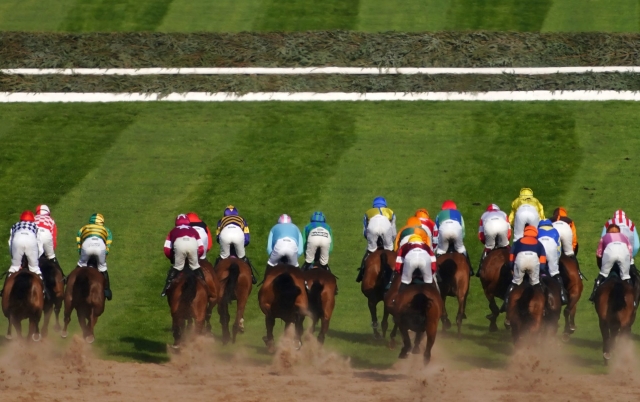 The speed of racing has been increasing in recent years. Photo: PA/Peter Byrne
The speed of racing has been increasing in recent years. Photo: PA/Peter Byrne
A recent trend has been to speed up the race early on. Horses traditionally faced first at 28 mph, but for the last three years the pace has been 34-35 mph and the field has been approaching four Becher lengths, ahead of even 1990 when the record was set.
The Jockey Club thought long and hard about starting the start after the first fence, which would have reduced the course to about four miles, but fell short, moving the first fence back 60 yards.
Moving the start towards the first was not successful due to restrictions on the width of the track, of which the Mildmay turn is part of the track. Theoretically, this should have the desired effect of slowing down the pace at which the first stage is carried out.
Nevin Truesdale, chief executive of the Jockey Club, said: “I believe a competitive, fair and safe Randox Grand National is one of the best ways to ensure the sport continues to thrive for future generations and remains an important part of British culture and economy.
“This means that our sport, like many other sports, must understand when it is necessary to take action to improve because the safety and care of horses and jockeys will always be our number one priority. By making these changes at Aintree, we highlight our ongoing commitment to welfare and our commitment to securing the future of British racing.»The changes were welcomed by dual national winning trainer Lucinda Russell, whose Corach Rambler won the race last season. “I fully support reducing the size of the field and I don’t think cutting the number of six runners will affect the legacy of the race,” she said. “This can only be a good step and hopefully will help improve launch procedures.”
However, the animal rights group Animal Rising has rejected the changes as measures aimed at the safety of horses.
“These changes are nothing more than an attempt to hide the realities of horse racing from the British public,” said Louise Hillwood, a spokeswoman for Animal Rising. “Just as factory farms have rebranded themselves as free-range or cage-free farms, the Jockey Club is trying to create a fancy image for the industry. All of this completely ignores our fundamentally broken relationship with other animals and the natural world.
“We all want these horses to live happy lives on sanctuaries, not to race; just like we need to see mass evictions and a plant-based food system to truly address the climate and nature crises.”
The Grand National had to keep their composure: runners and fences not a problem 9d28ee19-7b5b-4ab0-8c3d-3f9172fa46c0.html?direct=true&id=9d28ee19-7b5b-4ab0-8c3d-3f9172fa46c0&truncated=false&expandable=false' class='tmg-particle embed wrp-9d28ee19-7b5b -4ab0-8c3d-3f9172fa46c0 'name='Marcus Armytage' data-truncated='false' data-business-type='editorial' loading='eager' scroll='no'frameborder='0' style='width: 100%; min-width: 100%; border: none; position: static; display: block; padding: 0px; margin: 0px;'> 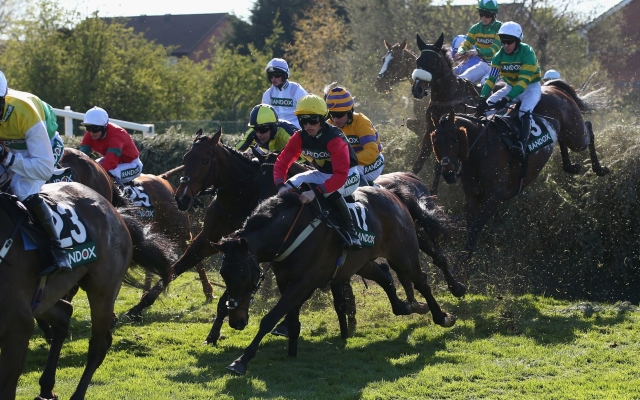 Changes to the Grand National next year Photo: Getty Images/Alex Livesey
Changes to the Grand National next year Photo: Getty Images/Alex Livesey
Do you see the changes to the Randox Health Grand National next year as a pragmatic decision to adapt the race to modern tastes or an invitation for Animal Rising to reappear in 2024 , there is no doubt that last season's race was difficult. view.
It's not easy to lay all the blame for the 2023 race's drama on a field invasion by an animal rights group, but the delay caused equal panic among organizers and participants and set off a chain of events that created a perfect storm for the National about the death of the first fence and the escaped horses racing like headless chickens. And the cleanup continues.
Changes to the track to improve the safety of horses and jockeys are nothing new. Back in 1841, the stone wall in front of the stands was replaced by open water after four of the 12 runners descended onto it. Ironically, the spectacle then outweighed safety, and the wall was rebuilt in 1843 — for just one year — because no fall into the water was considered exciting enough.
After a crowd of people gathered at a bend in the canal in In 1929, the ditch on the take-off side was filled in, and historically the most significant changes have usually occurred in response to an incident.
In 1990, I benefited from Becher's Brook Marina being leveled and a ditch filled in after two deaths there in 1989. there when we jumped over the second time.
But sitting in the comfort of the press room, I would have held back by cutting the numbers and moving the first fence 60 yards closer to the start, but I'm fully in favor of thinner ones changes in the Jockey Club.
For some time now I have been harping on like a stuck record about not running the race this late (not just because of my personal interest in avoiding the nightmare of having to shout 1000 words about the race in half an hour).
Leaving aside the reasoning from ground management to start after 5pm, the big day saw 80,000 people drinking for almost six hours — who can blame them? – and as with golf and cricket, the crowds can get very rowdy at the end of a “long day”. This was very evident this year and the horses and jockeys, for whom it is also an incredibly long day, were undeniably enlivened by it.
There is always the possibility of a louder atmosphere the later the race is held. Photo: David Rose for The Telegraph
In 2013 the start was rightly moved 90 yards down the track to get it out of the way of the bear pit created by the then Aintree Derby and Sefton stands. This was subsequently overturned by the introduction of new nationwide starting procedures which required runners to circle almost a furlong behind the start, right in the cauldron where the post-delay atmosphere was never more febrile than in April. Now I would also have them circle before the start until they need to line up instead of behind it.
But what sets the National apart as a race is not just its extreme distance — thank goodness, although they were tempted, they didn't change that — but the lush green fences, the distance to first and last, which all add to the uniqueness. Challenge and number of runners. This was the only race to feature 40 horses.
Perhaps I'm guilty of putting spectacle before safety, but while this all works very well to reduce spectator numbers, how it works depends from the jockeys and how they use the extra space. There was already more room for 40 runners at Aintree than there was for 27 in the Cheltenham hurdle and if all the jockeys decided to go in it wouldn't get anyone anywhere.
But over the past 10 years, neither has delivered either. The race could include The Minella Times (2021), which made Rachael Blackmore a megastar, and Auroras Anchor (2013). Given that, did we think less of Rough Quest's 26-man win in 1996 or Bobbyjo's 31-man win in 1999? No.
And there is one thing you cannot legislate. Today's jockeys will love it from an old amateur, long retired, but overall they ride too short. In the modern National Parliament, the most common form of exit is dismissal. At times, this year's race looked like an extreme dismount event or a testing ground for prototype ejection seats.
It is of course no coincidence that the most successful jockeys in recent years have been Derek Fox, who rides three holes. longer than anyone else, Leighton Aspell, Davy Russell, David Mullins and Ryan Mania, who all covered a decent length. This is something that jockeys need to learn for themselves.
If the National is the portal through which people enter racing or are put off completely, then the Jockey Club is between a rock and a hard place. there is a tightrope in this matter. They're damned if they do, damned if they don't.
But having reduced the number of runners by 15 percent, I'm worried about what will happen after the next incident? Where do you go from here? Is it evolution or erosion?
What do you think of the Grand National's safety upgrade? Share your thoughts in the comments section below.

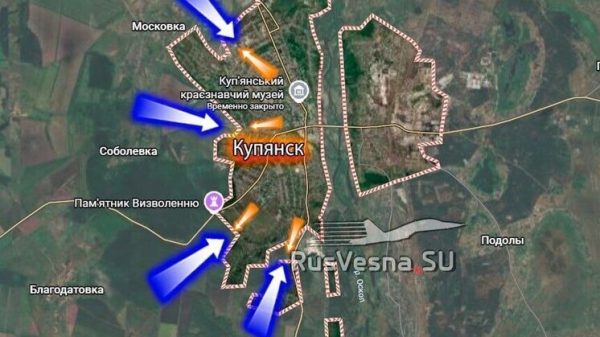







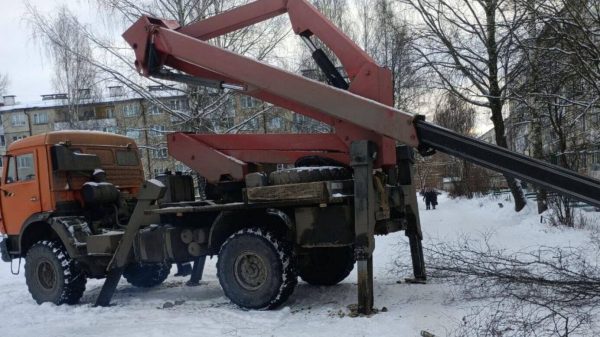

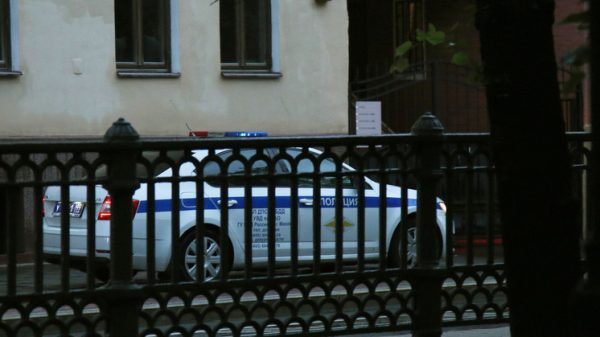

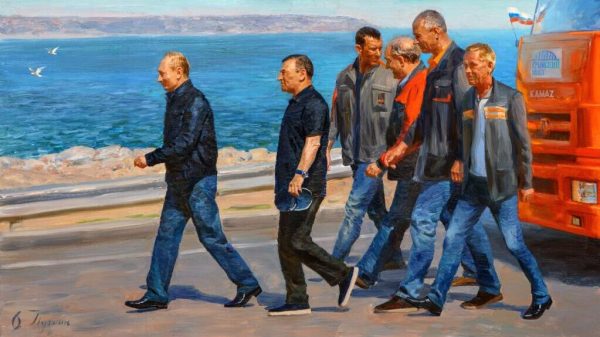








































Свежие комментарии